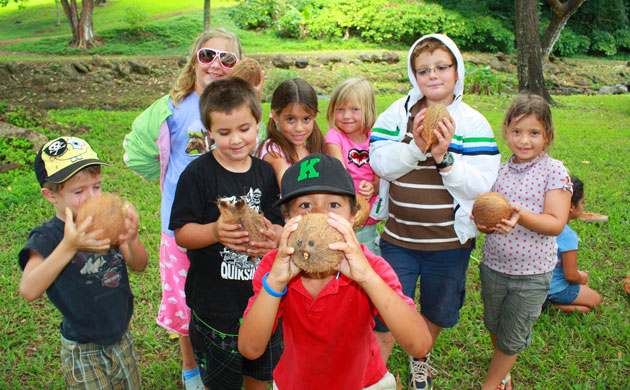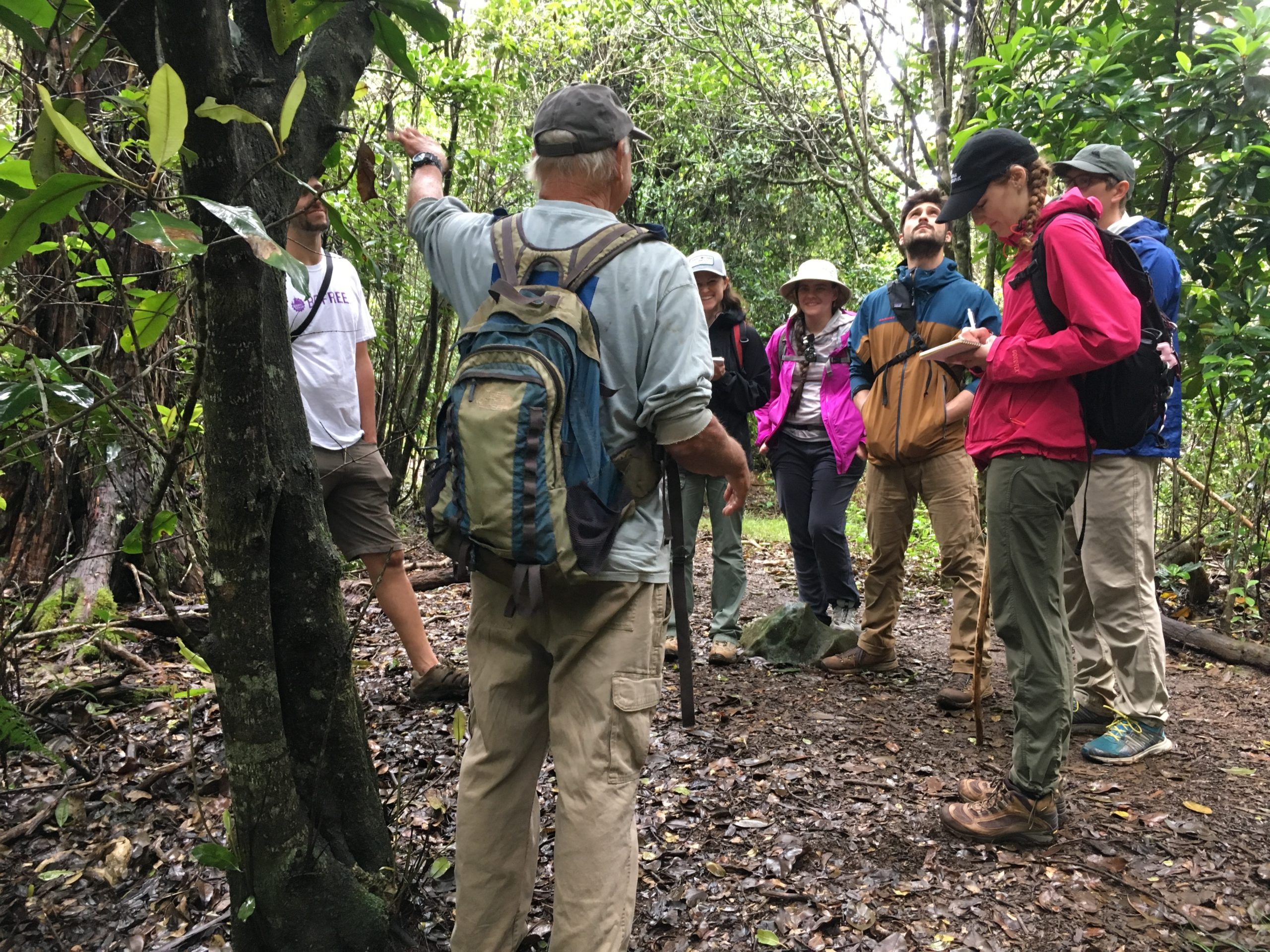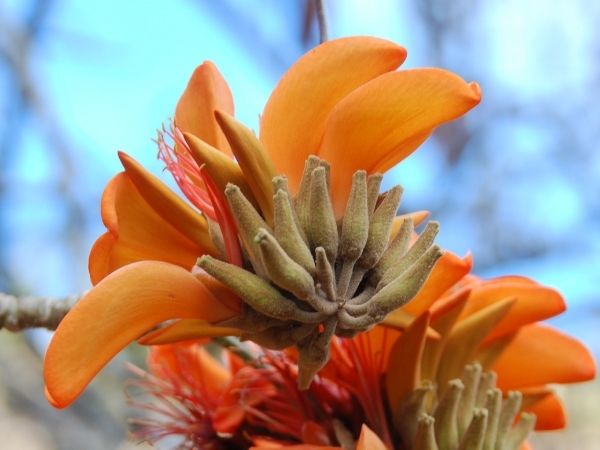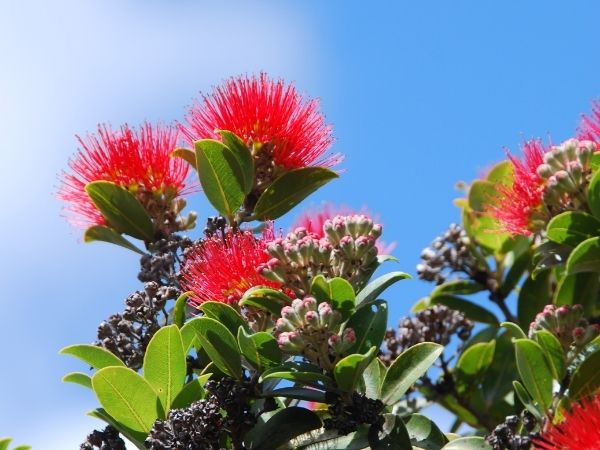Tropical Plant Database - Plant Details
Cyanea kuhihewa
Conservation Status
- IUCN: critically endangered
- USFWS: Endangered
- Listed with PEP
Genus: Cyanea
Species: kuhihewa
Species Author: Lammers
A member of the bellflower family (Campanulaceae), Cyanea kuhihewa (Haha in Hawaiian) is a shrub 0.4 to 2.3 meters (1.2 to 7.4 feet) tall; with unbranched erect stems 0.4 to 0.5 centimeters (0.16 to 0.2 inches) in diameter. Leaves are glabrous (smooth), 31 to 38 cm (12 to 15 in) long, 1.2 to 1.5 cm (0.5 to 0.6 in) wide, and slightly paler below. Inflorescences are ascending (growing obliquely upward), and are 5 to 8 flowered. Calyx lobes are triangular, 1.4 to 1.5 mm (0.06 in) long, and 0.9 to 1.1 mm (0.04 in) wide. The corolla (flower petals) is rose purple with lobes edged in white, 47 to 53 mm (1.9 to 2.1 in) long, a curved tube 28 to 33 mm (1.9 to 2.1 in) long and 5.3 mm (0.2 in) at the base. Mature berries have not been observed. Seeds are ellipsoid, dark brown or black, 0.7 to 0.8 mm (0.03 in) long, and 0.3 to 0.4 mm (0.03 in) wide, smooth and shiny.
- Lammers, T. 1996. A New Linear-Leaved Cyanea (Campanulaceae: Lobelioideae) from Kaua'i, and the "Rediscovery" of Cyanea linearifolia. Brittonia, 48(2), 237-240. http://www.jstor.org/stable/2807820
- Rønsted, N., & K. R. Wood. 2020. Cyanea kuhihewa: Rediscovering one of Hawai’i’s rarest trees. Plants People Planet 2(2):107-110. https://doi.org/10.1002/ppp3.10099
- Wagner, W.L., Herbst, D.R., & Lorence, D.H. (2005-). Flora of the Hawaiian Islands website. http://botany.si.edu/pacificislandbiodiversity/hawaiianflora/index.htm
This database entry has been complied by Matthew Kahokuloa, Jr.
Cyanea kuhihewa is monitored by field botanists of the National Tropcial Botanical Garden (NTBG) and the the Hawai‘i Extinction Prevention Program. Seeds are being collected and propagated for restoration in Limahuli Preserve on North Coast Kaua'i. The National Tropical Botanical Garden has the species in cultivation, but it is very difficult to grow. Tissue culture of the last remaining plant known of this species is now underway at several labs.
Cyanea kuhihewa is typically found in Metrosideros polymorpha (ohi'a) – Dicranopteris linearis (uluhe) lowland wet forest at 512 meters (1,680 feet) elevation. Associated native plant species include Antidesma platyphyllum (hame), Athyrium microphyllum (akolea), Bidens spp. (ko'oko'olau), Bobea spp. (ahakea), Boehmeria grandis (akolea), Cibotium spp. (hapu'u), Clermontia spp. (oha wai), Cyrtandra spp. (ha'iwale), Diploterigium pinnatum (uluhe lau nui), Dubautia knudsenii (na'ena'e) Eurya sandwicensis (anini), Freycinetia arborea ('ie'ie), Kadua acuminata (au), K. tryiblium (no common name), Ilex anomala (kawa'u), Isodendrion longifolium (aupaka), Machaerina spp. (uki), Melicope spp. (alani), Pisonia spp. (papala kepau), Perrottetia sandwicensis (olomea), Pipturus spp. (mamaki), Polyscias spp. (ohe), Psychotria spp. (kopiko), Sadleria spp. (ama'u), and Wikstroemia spp. (akia)
- Stone, Benjamin C. 1967. A Review of the Endemic Genera of Hawaiian Plants.” Botanical Review, vol. 33, no. 3, pp. 216–259. JSTOR, www.jstor.org/stable/4353741
- [NTBG] National Tropical Botanical Garden. 1991. NTBG database herbarium specimen detail for Cyanea kuhihewa, T008832 and T020720, 10 MAY 1991.
- [NTBG] 1994. NTBG database herbarium specimen detail for Cyanea kuhihewa, 015722, 24 JUN 1994.
- [NTBG] 1997. NTBG database herbarium specimen detail for Cyanea kuhihewa, 025805, 17 JUN 1997.
Cyanea and four other Hawaiian lobeliad genera (Delissea Gaud., Clermontia Gaud., Lobelia L. and Trematolobelia A. Zahlbr.) are believed to have evolved flowers adapted for pollination by nectarivorous Hawaiian Drepanidae (Hawaiian honeycreepers) and Hawaiian Mohoidae (previously known as Hawaiian honeyeaters.
- Lammers, Thomas G., Freeman, Edward C. 1986. Ornithophily among the Hawaiian Lobelioideae (Campanulaceae): Evidence from Floral Nectar Sugar Compositions. https://bsapubs.onlinelibrary.wiley.com/doi/abs/10.1002/j.1537-2197.1986.tb10913.x
Initially mistaken for another species in the same Genus, Cyanea linearifolia. The new species was named Cyanea kuhihewa — kuhihewa meaning “to suppose wrongly” in Hawaiian language—a reference to the confusion with Cyanea linearifolia.
- Lammers, T. 1996. A New Linear-Leaved Cyanea (Campanulaceae: Lobelioideae) from Kaua'i, and the "Rediscovery" of Cyanea linearifolia. Brittonia, 48(2), 237-240. http://www.jstor.org/stable/2807820
IUCN Status: Critically Endangered (CR): Cyanea kuhihewa is assessed as Critically Endangered as it has a very small population of less than 50 mature total individuals. It also has an EOO of less than 100 km2 (4 km2), an AOO of less than 10 km2 (4 km2), occurs in only one locations, and has an estimated continuing decline in area, extent and/or quality of habitat, and number and percentage of mature individuals in the only known subpopulation.
Federal Listing Status: Endangered
Cyanea kuhihewa is threatened by pigs, rats, goats, deer, nonnative invertebrates (e.g., slugs) which degrade and destroy habitat and possibly forage upon the species, and displacement by invasive, non-native plant species.
- Rønsted, N., Wood, K., Nyberg, B. & Lorence, D.H. 2020. Cyanea kuhihewa. The IUCN Red List of Threatened Species 2020: e.T80230488A170393959. https://dx.doi.org/10.2305/IUCN.UK.2020-2.RLTS.T80230488A170393959.en
- T008832 - collected by K. R. Wood in 1991
- T010720 - collected by K. R. Wood in 1991
- 015722 - collected by Steve Perlman in 1994
- 025805 - collected by David H. Lorence in 1997
- 085257 - collected by K. R. Wood in 2017
- 085258 - collected by K. R. Wood in 2017
- Unassigned - collected by K. R. Wood in 2019
- 082494 - collected by K. R. Wood in 2020
- 094869 - collected by K. R. Wood in 2023
- 094267 - collected by K. R. Wood in 2023
- Unassigned - collected by K. R. Wood in 2023
- Unassigned - collected by K. R. Wood in 2023
- S092860 - collected by K. R. Wood in 2023
- 094873 - collected by K. R. Wood in 2024
- S094980 - collected by K. R. Wood in 2024
We currently have 15 herbarium specimens for Cyanea kuhihewa in our collection. Click on any specimen below to view the herbarium sheet data.
.svg)


.JPG)
.JPG)










